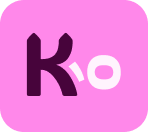
Designing a fintech platform from concept to MVP
A digital platform for applying, managing, and organizing company credit cards and documents
Project: Start up
Client: Reon / Quickstart
Role: Product designer
Team: Project Manager, Developers, QA, Designer
Project intro
In the beginning, it was just the CEO and me, collaborating to turn his idea into a visual concept in Figma, something we could share with potential stakeholders and early users.
Based on their feedback, we got a better understanding of what features they needed and how they envisioned using the platform. Although no formal UX testing was done at that stage, I wanted to gather more actionable feedback. Since not everyone was familiar with Figma prototypes and I wasn’t present in stakeholder meetings to walk them through the flow I decided to build a clickable prototype in Webflow.
Using Webflow as a prototyping tool was an interesting learning experience. In the end, I probably wouldn’t use it again for this purpose, but I’m always open to experimenting with new tools and approaches to find what works best in different contexts.
How it started
Initially, the platform aimed to:
Enable users to sign up and create a company seamlessly.
Provide a centralized location for companies to store documents, facilitate e-signatures for contracts, and manage access permissions.
How it developed
As the project evolved, additional features were incorporated:
Application and management of company credit cards.
Tools for collecting receipts from employees.
The visual decision
I aimed to keep the overall look simple, clear, and modern — so users could focus on the platform itself rather than the interface. Since many of the actions involve complex or high-stakes decisions, such as sending out signatures or managing company credit cards, clarity in the UI was essential.
Here you can see a few examples of components from the design system. Since I worked on this project in between other projects, I had to prioritize my time carefully. Still, I always make sure to create reusable components for fundamental elements, it makes future scaling easier and ensures consistency as the project grows.
